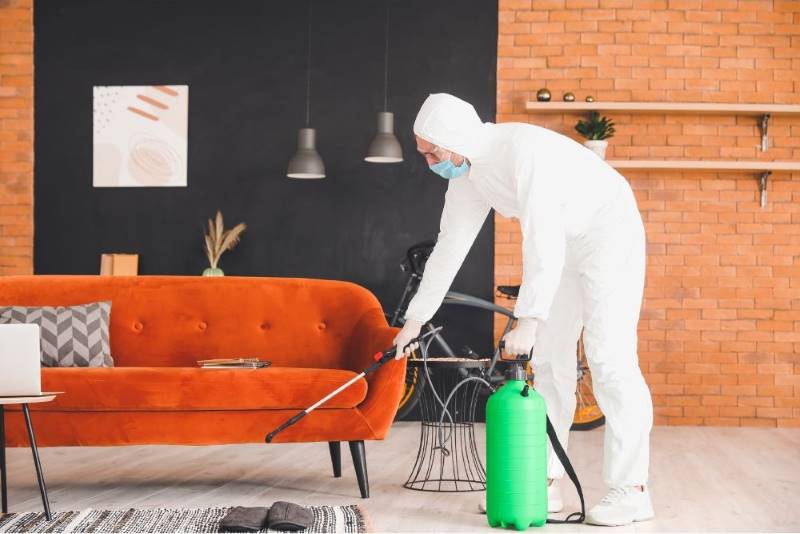Water damage is one of the most frequent among the most disastrous problems a homeowner may face, from sewage backup and plumbing leaks to flooding and natural disasters. There is no time to spare; if you have a flooded basement or a heavily flooded area on your property, you need to act promptly to find the source and eliminate the water to prevent permanent loss.
One of the actions required to prevent serious damage to the property is water extraction. Water extraction helps in preserving your property from secondary damage.
Let us explore deeper what is water extraction!
What Is Water Extraction?

Water extraction is the process of temporarily or permanently extracting water from any source to prevent damage. It is also referred to as water withdrawal, water abstraction, and water consumption.
It’s best to contact water restoration services as soon as possible if the damage is severe. The professionals will minimize the water damage and will also reduce the possibility of irreversible damage to valuables, stop mould growth before it creates a severe health risk, and restore the property to its original state.
What is Water Extraction and Water Mitigation’s Difference?
Water extraction and mitigation are two processes that are frequently included in water damage restoration services, although they each use different techniques.
The process of extracting water from a property involves the use of industrial vacuums and submersible pumps. Mould can grow as soon as 24 to 48 hours after the property is flooded. Mold build-up can result in major health issues like allergic reactions, asthma attacks, and severe infections in individuals with weak immune systems. That’s why, as soon as possible, contacting professionals to handle water extraction is a must!
However, during the water mitigation process, unsalvageable materials may need to be removed, affected structures like drywall, flooring, and upholstered furniture may need to be got rid of, all affected areas must be cleaned and disinfected, the property must be deodorized, the structural components of the property must be dried out using the proper equipment, and humidity and moisture testing must be done to make sure that all issues have been fixed.
What Is Water Extraction’s Process?
Rather than handling the water extraction process alone, homeowners should contact water damage restoration services. Homeowners may ensure that mould won’t develop and that all standing water has been properly removed with the help of professionals.
The basic processes that water damage restoration services do are as follows:
Step 1: Finding the Water Source and Shutting It Off

The professionals will find the source of the water damage and shut off any further water intrusion into your property. As a way to identify additional water damage, moisture sensors and meters will be utilized. By using these tools, professionals can determine an area’s level of moisture and determine the necessary restoration actions.
Step 2: Checking Safety Hazards
Electrical outlets, gas stoves, and other equipment can be sources of hazard in your property. Before coming up with a strategy for water extraction and restoration, professionals look for these first. In light of this, if there has been significant water damage, they will securely unplug all electronics or turn off the electrical supply for the entire property.
Step 3: Water Extraction
Water can stay hidden in walls, crawl spaces, carpets, and furniture. Consequently, it could lead to the growth of mould or further damage to the property structure. To prevent further damage to your property, you must remove any concentrations of visible standing water. Professionals will help you in removing the water by using a pump or a vacuum.
Pumps
The professionals will pump up the water, which will then be drained through a drain or an aperture leading outside of your property.
These water extraction pumps come in different sizes, which helps swiftly sucking up and getting rid of superfluous water. A submersible pump will be utilized to continually pump out the water if the water level is high.
Vacuum
Wet-dry vacuums, for example, will be utilized to remove extra water from porous surfaces, carpets, and other areas. These vacuums work by vacuuming up moisture while applying a cleaning solution. When there has been a lot of water damage, industrial wet-dry vacuums are utilized since their tanks can store more.
Step 4: Drying Out the Damaged Area

Professionals will dry building spaces, walls, and ceilings with drying equipment. This drying equipment like a fan, will help in the evaporation of water by forcing air across surfaces.
Step 5: Applying Disinfection
Professionals will help protect your property from bacterial growth by using EPA-approved disinfection and sanitization treatments. To get rid of smells and destroy microorganisms, these solutions and foggers are utilized to turn a chemical into a fog.
Step 6: Removing Moisture

In this last phase, professionals will begin removing the moisture utilizing specialized equipment to get rid of any remaining moisture in the structure. To prevent the water from falling back onto the materials, the dehumidifiers will extract and remove it from the air.
Summary
Any property and homeowner can experience disruption and devastation from water damage. When something unexpected occurs, it’s important to act fast to help stop significant damage. A property’s structural stability may be at risk from substantial water damage, but even little water damage can increase the possibility of hazardous mould growth.
What is water extraction exactly? Not only must water be removed, but any areas that have come into contact with water must also be cleaned and restored. You need to consider the adverse impact that water has on the property, the possibility of mould growth, and the things inside.
The fastest way to remove water is to contact a water damage extraction service.


